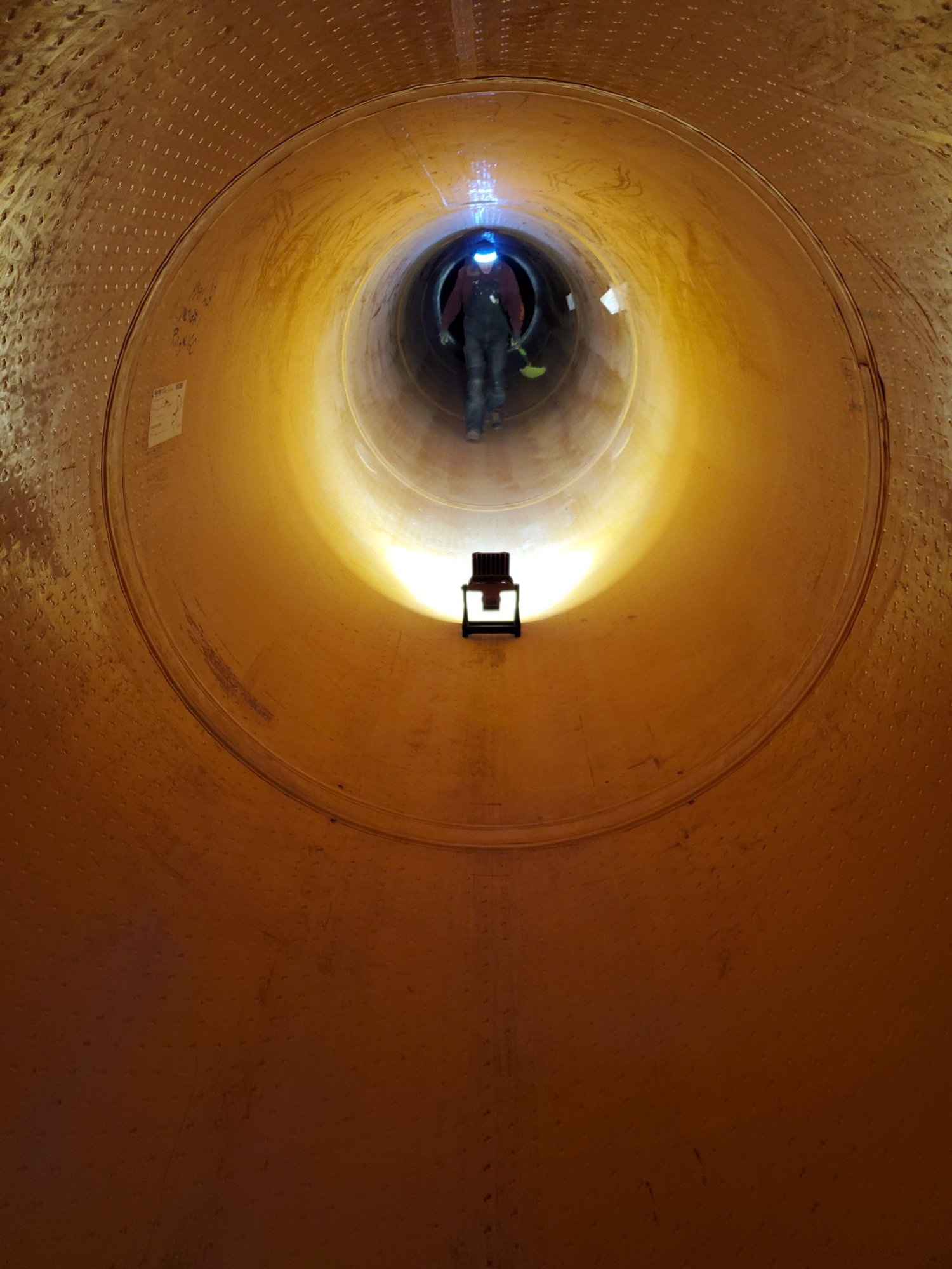What is the Life of Concrete Lining?
Concrete lining plays a crucial role in enhancing the longevity and durability of concrete structures, particularly in sanitary applications. At Engineered Containment, we emphasize a 100-year design life for our concrete protective linings (CPL), ensuring that infrastructure remains robust and functional for generations to come.
The service life of unlined concrete sanitary trunk lines typically ranges from 50 to 75 years, depending on environmental conditions and maintenance practices. Unlined concrete pipes in sanitary applications are prone to degradation due to various factors, including chemical corrosion from wastewater, biological attack, and constant moisture exposure.
For instance, the Sacramento Area Sewer District's Central Trunk sewer, which was constructed in 1961 using unlined reinforced concrete pipe, experienced severe corrosion after nearly 50 years of service. This led to significant rehabilitation efforts to restore the structural stability of the sewer line. (West Yost)
Understanding Concrete Lining
Concrete lining involves applying a protective layer to concrete surfaces to shield them from environmental and chemical attacks. This process is especially vital in sanitary systems, where concrete is exposed to harsh conditions, including corrosive chemicals, biological waste, and constant moisture. Common types of concrete lining include:
Anchored geomembrane embedded into concrete (typically made out of HDPE) - usually called CPL
Epoxy and/or resin coatings
A slip-lined application known as cured-in-place pipe (often called CIPP).
The Importance of Concrete Lining in Sanitary Applications
Sanitary systems, such as sewer lines and wastewater treatment plants, are subject to severe wear and tear. Unlined concrete in these environments can suffer from rapid degradation due to:
Chemical Corrosion: Wastewater often contains acids and other corrosive substances that can erode concrete.
Biological Attack: Microorganisms can produce biogenic sulfuric acid, further deteriorating the concrete.
Moisture Penetration: Continuous exposure to moisture can lead to cracking and structural failure.
Lined vs. Unlined Concrete: A Comparison
| Aspect | Lined Concrete | Unlined Concrete |
|---|---|---|
| Durability | High resistance to chemical, biological, and moisture attack | Susceptible to rapid degradation from environmental factors |
| Maintenance | Low maintenance requirements due to protective layer | High maintenance needed to address frequent deterioration |
| Lifespan | Up to 100 years with proper design and installation | Significantly shorter, often less than 50 years |
| Cost Efficiency | Higher initial cost but lower long-term repair costs | Lower initial cost but higher long-term maintenance costs |
| Structural Integrity | Maintains structural integrity over the long term | Prone to cracking and failure due to exposure |
The 100-Year Design Service Life (DSL)
At Engineered Containment, we strive for excellence by ensuring our concrete linings achieve a 100-year design life. This is accomplished through:
Advanced Materials: Utilizing state-of-the-art materials that offer superior protection against corrosive elements.
Expert Engineering: Our team of experienced engineers designs linings tailored to specific project needs, ensuring optimal performance.
Quality Installation: Proper installation by skilled professionals ensures the longevity and effectiveness of the lining.
Benefits of a 100-Year Design Life
Choosing a concrete lining with a 100-year design life offers several advantages:
Long-Term Cost Savings: While the initial investment may be higher, the reduced need for repairs and maintenance leads to significant savings over time.
Sustainability: Extending the life of concrete structures reduces the need for frequent replacements, contributing to environmental sustainability.
Reliability: A longer lifespan ensures the continuous functionality of critical infrastructure, minimizing downtime and service disruptions.
Safety: Maintaining structural integrity over a century enhances the safety of the infrastructure for both workers and the public.
Concrete lining is essential for extending the life of concrete structures, especially in sanitary applications where exposure to harsh conditions is common. Engineered Containment’s focus on a 100-year design life ensures that our concrete linings provide unparalleled durability, cost efficiency, and sustainability. By choosing lined concrete over unlined, infrastructure owners can protect their investments, ensure reliable service, and contribute to a safer, more sustainable future.
Invest in the longevity and integrity of your concrete structures with Engineered Containment’s high-quality concrete protective linings, designed to stand the test of time and harsh environments for up to 100 years. Contact us today to learn more about our solutions and how we can support your next project.


